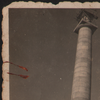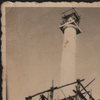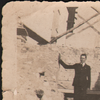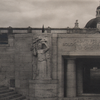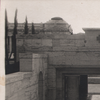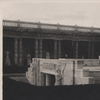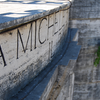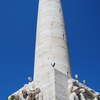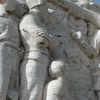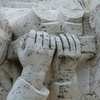 | Faenza (Ravenna) 1886-Rome 1973;
sculptor and painter
The son of a bricklayer foreman, began studying drawing and sculpture under the guidance of A. Berti. In 1905 he enrolled at the Academy of Fine Arts in Florence, attending courses in sculpture by A. Rivalta. You also know G. Factors, of which performs a bust in 1907 (Livorno, Art Gallery). In 1912 he participated for the first time at the Venice Biennale and the following year he won the National Retired art of sculpture at the Academy of Fine Arts in Rome. Participate in the 1914 and 1915 in two editions of the Roman Secession. After the war, with the reappointment of Retired (1918), its activity continues intense, targeted toward the early monumental sculpture in 1921 to run the monument Nazario Sauro to Ravenna and the group for the Insurrection monument to Vittorio Emanuele II Rome. Of 1924 is the right group of sculptures on the pediment of the building of stable Heritage (formerly Banca Nat. Credit) to Piazza Colonna in Rome, representing the Labour and Savings In this production, cutting and monumental academic, alongside sculptures and portraits the most intimate, intense activity for the biennial exhibition in Venice and Rome, the Roman exhibitions of amateurs and lovers of Italian art and exhibitions abroad (Buenos Aires, 1923, Barcelona, ??1929). Not to be forgotten, especially in the early production, the creation of sophisticated crafts, maybe his most remarkable things, such as many cups in bronze and ceramics made around the twenties and thirties. The activity of painting, regarded as a private experience, beginning around 1915. In June 1923 he exhibited at the Art Gallery Bragaglia in Rome and in 1926 the first exhibition of Italian art of the twentieth century, in Milan. In 1927 he was awarded the chair of sculpture at the Academy of Fine Arts in Bologna, which will hold for the next thirty years, serving from 1952 to 1957, the post of Director. The first one is presented at the Art Association of Rome in 1930, inaugurating a long period of success, by appointment as a member of the Accademia Clementina in Bologna (1934) obtained the prize at the Third Quadrennial Roman (1939). This period was known as the production of Drei: the 1932 are two groups for the burial to the dead fascists to the monastery of Bologna and the large statue of Hercules Stadium of Marble in Rome. Also in Rome, D. performs the monument to the Oppian Alfredo Oriani (l935), some bas-reliefs for the Duke of Aosta bridge (opened in 1939) and the stone work of the fields for the E42 (1940-42, but only by mail in 1962 , Roma, Viale del Turismo). In 1940 he was appointed Academic S. Luke. In 1941 in Rome at the gallery holds a large staff of the Baths After the war continued intense activity. Given its proven expertise in 1947 he was appointed member of the Supreme Council of Antiquities and Fine Arts (and remained in office until 1951).
Bibliography: Catalogue of the exhibition Ercole Drei. sculptor, edited by F. Bertoni, Bologna 1986, Rome 1934 Exhibition catalog edited by F. D'Amico, G. Appella Modena - Rome 1986 |

